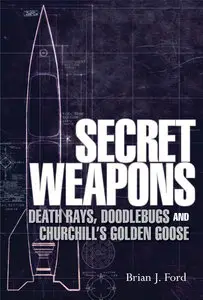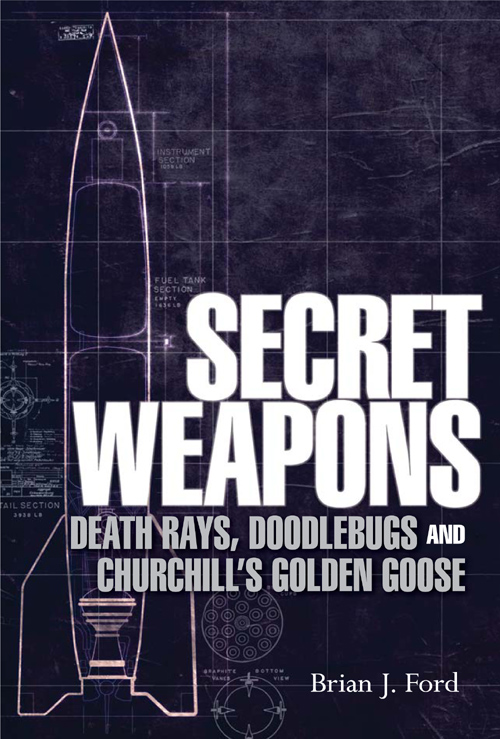Brian Ford, "Secret Weapons: Death Rays, Doodlebugs and Churchill's Golden Goose"
ISBN: 1780967217 | 2013 | EPUB/MOBI | 256 pages | 1 MB/1 MB
Secret Weapons charts the race in technology between the Allied and Axis powers, with examples of their use in battle, along with those that remained experimental or remained the stuff of science fiction. Importantly it also shows how wartime research set in train the high-tech era in which we now live. The account charts secret weapons development from the Japanese ray gun of the 1930s to the powerful V2 rocket, and compares World War II secret weapons research with the realities of present-day science. It's a riveting story of innovation under pressure, from a world of machine guns and biplanes to electronics, rockets, and nuclear bombs with the power to wipe out humanity.
Also included is how Nazi Germany's military might was founded upon the development of futuristic weapons. It follows the repercussions of the Treaty of Versailles, and the rise of militarism as a catalyst of technological advancement. Secret weapons are shown to have arisen out of Germany's admiration of military engineers, technologists, chemists, and experimenters. Many of the weapon developments were kept secret - even from the authorities in the Nazi machine - as adventurous contingencies for use in later stages of the campaign. In Japan, weapons development was overseen by the Imperial General Headquarters which had been established by Imperial Decree as long ago as 1893. Brian Ford explores the growing momentum that marked the 1930s, and the sense of increasing urgency that underpinned the most frenetic phase of technological development ever seen in warfare.
The book mirrors the Axis research with the science developed by the British and Americans, who had pioneered the harnessing of science and technology for military means. The first planes, submarines, aircraft carriers, and automatic weapons were products of these Western designers. And the influence of competitive sporting events (races like the Schneider trophy) continued to act as a spur to progress that would bring out the best in inventiveness - and which would increase the momentum of new thinking that would prove to be crucial in the theatre of war. And it was British ingenuity, as much as engineering, that kept the Allies in a continued race with the Axis powers in secret military development.
The book tells the parallel stories of developments in weaponry as the war goes on, showing how each side responded to the threat of the other.



